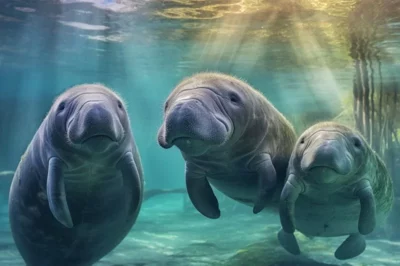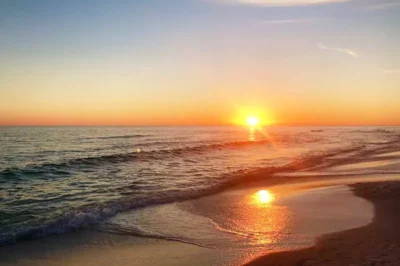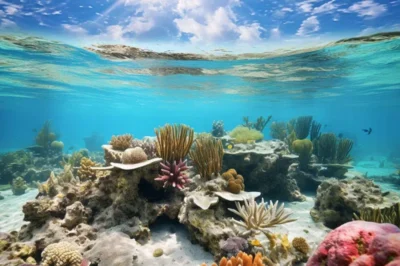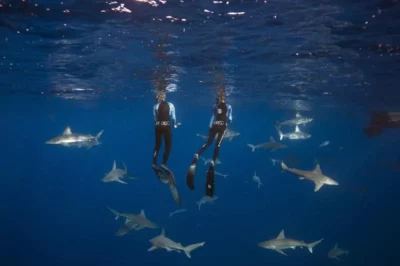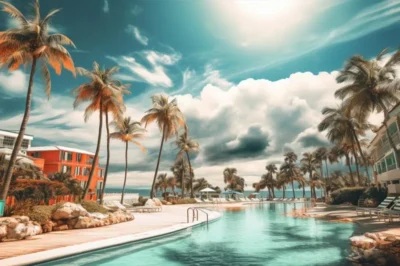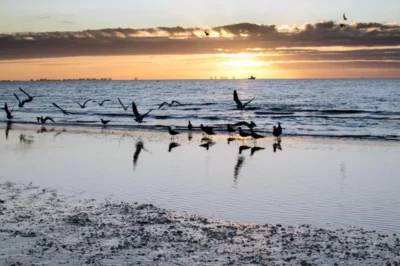12 Best Snorkeling Spots in Florida Keys: A Snorkeler’s Guide
The Florida Keys are often referred to as America’s own Caribbean paradise, boasting crystal-clear waters, balmy weather, and a vibrant marine ecosystem. Whether you’re a beginner eager to explore the underwater world or an advanced snorkeler in search of new adventures, the Keys offer some of the best snorkeling spots in the United States.
- The Magic of Florida Keys
- Best Time to Snorkel in Florida Keys
- Top Snorkeling Spots in Florida Keys
- John Pennekamp Coral Reef State Park
- Sombrero Reef
- Bahia Honda State Park
- Alligator Reef
- Looe Key National Marine Sanctuary
- Molasses Reef
- Fort Zachary Taylor State Park and Beach
- Dry Tortugas National Park
- Coffins Patch
- Hens and Chickens Reef
- Rock Key
- Indian Key Historic State Park
One of the great advantages of snorkeling in this archipelago is the flexibility it offers: you can enjoy breathtaking underwater vistas with or without boats.
The Magic of Florida Keys
Nestled at the southernmost tip of the Sunshine State, the Florida Keys is a 120-mile long chain of tropical islands curving around the base of the Florida peninsula, linked to the mainland by a series of bridges.
The breathtaking beauty of the Keys is no secret. Its picturesque blue-green seascapes and sun-dappled shores can captivate any heart.
But the real magic of the Florida Keys lies beneath its warm, inviting waters. Here, you’ll find the United States‘ only living coral barrier reef.
A hidden treasure trove teeming with vibrant coral colonies, myriad fishes of every imaginable color and pattern, graceful sea turtles, and much more.
Snorkeling in the Florida Keys is like diving into an episode of a stunning National Geographic documentary. The region’s marine biodiversity is nothing short of spectacular – it’s like a bustling city of aquatic life, functioning harmoniously beneath the waves.
From the minuscule, like the vibrant parrotfish nibbling on the corals, to the mighty, such as the majestic nurse sharks cruising the ocean floor, there’s a visual treat waiting for snorkelers at every turn.
Best Time to Snorkel in Florida Keys
When planning your snorkeling adventure, it’s crucial to consider when to visit. The beauty of the Florida Keys is that they provide excellent snorkeling conditions year-round. However, some months may offer a more optimum experience than others.
The summer months, from June to August, often provide the calmest waters, warmest temperatures, and the best underwater visibility. However, do keep in mind this is also the peak tourist season, so expect a bit more crowd at popular snorkeling spots.
The winter months, from December to February, are cooler but still offer good snorkeling conditions. However, it’s less crowded during these months, which could provide a more peaceful snorkeling experience.
Another important factor is to avoid hurricane season, which typically runs from June to November. While the Keys are well-prepared for such occurrences, it’s better to avoid any potential disruptions to your snorkeling plans.
Top Snorkeling Spots in Florida Keys
In the treasure trove that is the Florida Keys, choosing the best snorkeling spots can be like looking for a pearl in an oyster. But worry not, fellow ocean explorer, as we have compiled a list of the top five snorkeling destinations that are sure to satiate your thirst for underwater adventure.
John Pennekamp Coral Reef State Park
John Pennekamp Coral Reef State Park in Key Largo is often touted as the first underwater park in the United States. Covering approximately 70 nautical square miles, it’s a veritable wonderland for snorkelers.

Home to the only living coral reef in the continental U.S., the park offers an awe-inspiring display of natural beauty beneath the waves. From elkhorn coral formations to schools of parrotfish and angelfish, the vibrant colors and diversity of marine life are truly unparalleled.
The park offers several designated snorkeling areas, with the popular spots being the Christ of the Abyss statue and Cannon Beach, which features remnants of a Spanish shipwreck. Whether you’re a novice snorkeler or an experienced free-diver, the park provides an underwater experience that caters to all skill levels.
After your snorkeling adventure, you can enjoy kayaking, hiking, or picnicking, making John Pennekamp Coral Reef State Park a perfect destination for a full day of outdoor activities.
Sombrero Reef
Situated off the coast of Marathon in the Florida Keys, Sombrero Reef is part of the Florida Keys National Marine Sanctuary and is one of the most prolific coral reefs in the region.

With its iconic Sombrero Lighthouse acting as a sentinel, the reef extends over 30 acres and is a hub for marine biodiversity. Vibrant coral formations including brain and star corals provide the backdrop for an array of tropical fish, including yellowtail snappers, blue tangs, and queen angelfish.
The reef is a popular site for both snorkeling and diving expeditions and is usually accessed by boat. The shallow depths and clear waters make it an ideal location for snorkelers, who will find plenty to explore without needing to go deep. With protected status, the reef is incredibly well-preserved, offering a pristine snorkeling experience.
Bahia Honda State Park
Bahia Honda State Park in Big Pine Key is another jewel in Florida’s state park system, renowned for its beautiful beaches and excellent snorkeling opportunities.

The shallow, turquoise waters are perfect for beginners, while the variety of marine life offers something for even the most jaded snorkeling aficionados. Expect to see colorful coral, sea fans, and a diverse range of fish and crustaceans.
Besides snorkeling, Bahia Honda offers a range of other activities like kayaking, fishing, and bird-watching. Its scenic beauty makes it a popular spot for photography and picnicking as well, providing a comprehensive outdoor experience for the whole family.
Alligator Reef
Located near Islamorada, Alligator Reef is home to one of the largest reef systems in the Keys, named after the USS Alligator, which ran aground here in the 19th century.
With depths ranging from 8 to 30 feet, the reef offers a multi-level snorkeling experience, hosting a rich mix of marine life like yellowtail snapper, grunts, and even nurse sharks.

The reef also features an impressive variety of coral, including elkhorn and fire coral, which provide a rich, textured underwater landscape.
A notable feature of Alligator Reef is its lighthouse, which serves as a navigational aid and a point of interest for snorkelers. The reef is generally accessed by boat, and because of its size and complexity, it offers a unique experience every time you visit.
Looe Key National Marine Sanctuary
Named after the HMS Looe, a British ship that sank in the area in the 18th century, Looe Key National Marine Sanctuary is a haven for both snorkelers and divers.
Located about five miles offshore from Big Pine Key, the sanctuary covers approximately 5.3 square nautical miles and offers some of the best snorkeling in the Florida Keys. The reef here is particularly known for its diversity of coral species, including pillar coral, which is quite rare.
Snorkelers can expect to see an incredible variety of marine life, from goliath groupers to tiny cleaner shrimp. The water clarity is generally excellent, providing ideal conditions for underwater photography.
Molasses Reef
Molasses Reef is located in the Florida Keys National Marine Sanctuary and is one of the most visited snorkeling spots in the area. Known for its well-preserved coral formations and an extensive variety of marine life, it offers a rich underwater experience that captivates snorkelers and divers alike.

The reef features a variety of coral species including brain, star, and elkhorn corals, which serve as a home to a diverse range of fish like angelfish, butterflyfish, and even the occasional reef shark.
Due to its popularity, several boat tours offer trips to Molasses Reef. Snorkelers will find the shallow depths—ranging from 10 to 30 feet—accessible and inviting. Currents can be strong at times, so it’s best suited for those who have some snorkeling experience. The clear water conditions often offer excellent visibility, making it ideal for underwater photography.
Fort Zachary Taylor State Park and Beach
If you find yourself at the southernmost tip of the continental U.S., don’t miss the chance to snorkel at Fort Zachary Taylor State Park and Beach in Key West. This state park is not only home to a Civil War-era fort but also hosts some of the best snorkeling spots in the area.
The coral reef here is situated a bit farther from the shore, making it ideal for those who are more comfortable in the water. But once you reach the reef, you are rewarded with a breathtaking underwater ecosystem full of colorful fish, lobsters, and even the occasional octopus.
Dry Tortugas National Park
Dry Tortugas National Park, located about 70 miles west of Key West, is a remote and spectacular snorkeling destination.
Accessible only by boat or seaplane, the park is known for its historical Fort Jefferson, stunning beaches, and vibrant coral reefs. The isolated location means the waters are exceptionally clear, often offering visibility up to 100 feet.

Snorkeling sites are generally shallow, making them accessible for all levels of snorkelers. You’ll find a variety of corals, sea fans, and a plethora of fish species.
Due to its protected status, the marine ecosystem is thriving, and you might even spot a sea turtle or dolphin. It’s an all-day commitment to visit Dry Tortugas, but the unparalleled beauty makes it worth the effort.
Coffins Patch
Coffins Patch, near Marathon in the Middle Keys, is another excellent snorkeling destination. This reef is a series of mid-channel coral mounds featuring a wide array of coral species and other marine life. With depths ranging from 10 to 30 feet, Coffins Patch is suitable for snorkelers of all skill levels.
The reef is teeming with schools of grunt, snapper, and sergeant majors. You may also encounter larger species like grouper and barracuda. The variety of marine life, coupled with good water visibility, makes Coffins Patch a perfect spot for those looking to explore a less crowded, yet vibrant underwater world.
Hens and Chickens Reef
Located near Islamorada, Hens and Chickens Reef is named for its unique coral formations that resemble a hen surrounded by her chicks. This patch reef is known for its shallow snorkeling areas, with most spots being less than 20 feet deep. It’s an ideal location for beginners and families, offering a safe and intriguing underwater environment.
The reef is home to a variety of marine life, including parrotfish, yellowtail snapper, and even the occasional nurse shark or stingray. The clear, calm waters make this spot particularly good for underwater photography and offer excellent visibility for snorkelers.
Rock Key
Rock Key, located just a few miles from Key West, is a lesser-known but equally magnificent snorkeling location. Part of the Florida Keys National Marine Sanctuary, this reef is characterized by spur-and-groove coral formations and abundant marine life. Depths vary but are generally suitable for most snorkelers, ranging from about 5 to 35 feet.
The site is home to a wide range of fish species including angelfish, blue tangs, and grunts. The intricate coral formations also provide hiding spots for lobster, eels, and other interesting marine creatures. Since Rock Key is less frequented compared to other nearby reefs, it offers a peaceful snorkeling experience that allows for genuine interaction with the underwater world.
Indian Key Historic State Park
Snorkeling at Indian Key Historic State Park offers a unique combination of natural beauty and historical intrigue. Located in the Florida Keys, the park is accessible only by boat, which adds an element of adventure right from the start.
Once you arrive, you’ll find a shallow reef teeming with marine life that is ideal for beginners and experienced snorkelers alike. Vibrant schools of fish dance through the water, accompanied by the occasional sea turtle or stingray. The waters here are usually clear, offering excellent visibility.

Beyond its underwater treasures, Indian Key is steeped in history. It served as a salvaging base in the early 19th century and was once the Dade County seat.
While you dry off, you can explore the island’s network of trails and historical markers that tell tales of the Native Americans, pirates, and pioneers who once called this island home.
What Makes Snorkeling in Florida Keys Unique?
You might wonder, what sets snorkeling in the Florida Keys apart from other popular destinations? Why should this chain of islands make it to the top of your bucket list? Let’s dive into the specifics.
The Florida Keys is home to the third-largest living coral reef in the world, and the only one in North America. This vibrant ecosystem, known as the Florida Reef, is a paradise brimming with a variety of marine life forms.
It’s a magnificent underwater city where multitudes of vibrant fishes, lobsters, eels, and various species of hard and soft corals reside, painting the landscape with a spectrum of colors.
Each of these fascinating species plays a unique role in maintaining the balance of this marine ecosystem, making every snorkeling experience in the Florida Keys distinct and memorable.
Furthermore, the turquoise waters of the Keys are notably clear, often offering visibility up to 100 feet, providing snorkelers with crystal-clear views of the breathtaking marine world.
The water’s calmness, combined with its warmth throughout the year, makes the Keys an ideal place for snorkeling, no matter if you’re a seasoned snorkeler or a newbie testing the waters.
Lastly, a defining feature of snorkeling in the Florida Keys is the accessibility. The Keys’ geographic layout allows for countless beach access points and snorkeling sites, meaning you can walk right off the shore and be greeted by colorful schools of fish and mesmerizing coral formations. That’s not something you can say about every snorkeling destination!
Essential Snorkeling Gear for Florida Keys
- Snorkel Mask: A well-fitted, high-quality snorkel mask is key for clear underwater viewing.
- Snorkel: Choose a snorkel that’s comfortable in your mouth and easy to breathe through. Dry snorkels, which prevent water from entering, are an excellent option.
- Fins: Adjustable open-heeled fins offer flexibility and help you move easily underwater.
- Snorkeling Vest: A snorkeling vest provides buoyancy and is a great safety tool, especially for beginners or weak swimmers.
- Wetsuit or Rash Guard: Even though the water is generally warm, a thin wetsuit or rash guard can provide protection against the sun, cold, and marine life.
- Underwater Camera: Optional, but great for capturing your encounters with the stunning marine life.
- Mesh Bag: A bag to carry all your gear, which drains water and sand, is very useful.
Snorkeling Safety Tips
- Swim Within Your Limits: Don’t venture out further than you’re comfortable with. If you’re a beginner, stay close to the shore and gradually extend your range as you gain confidence.
- Always Snorkel with a Buddy: It’s safer and more fun to explore the underwater world with a partner.
- Check Your Equipment: Before you hit the water, ensure all your equipment is in good condition and fits correctly.
- Stay Hydrated and Protect Yourself from the Sun: The Florida sun can be intense, so drink plenty of water and apply waterproof sunblock.
- Be Aware of Currents and Weather Conditions: Check the weather forecast and be mindful of currents. If you feel the current is too strong, don’t hesitate to exit the water.
- Respect Marine Life: Enjoy observing the beautiful creatures, but remember not to touch or disturb them. Coral is particularly delicate and can be easily damaged.
- Don’t Stand or Walk on Coral: It damages the coral and can also result in injuries.
- Know the Emergency Procedures: In case of a mishap, knowing emergency procedures like the distress signal can be lifesaving.
Commonly Asked Questions about Snorkeling in Florida Keys
- Do I need any certification to snorkel in Florida Keys? No, you don’t need any certification to snorkel. However, you must know how to swim and feel comfortable in the water.
- Is it safe to snorkel in Florida Keys? Yes, it’s generally safe to snorkel in Florida Keys, but as with any water activity, caution is needed. It’s important to follow safety guidelines, check weather conditions, and respect marine life.
- What marine life can I expect to see? The Florida Keys teem with marine life. You can expect to see various species of colorful fishes like parrotfish, angelfish, and sergeant majors. Corals, sea fans, and sponges are common. You may also spot sea turtles, lobsters, and stingrays.
- Do I need to bring my own gear? While you can bring your own gear, many tour operators and dive shops offer equipment rentals.
- Can children snorkel in the Florida Keys? Yes, children can snorkel, and it’s a fantastic way for them to learn about marine life. However, they should be comfortable in the water, and adult supervision is necessary.
Florida Keys: More Than Just Snorkeling
While the Florida Keys are synonymous with world-class snorkeling, there’s more to this paradise than just its underwater wonders. Let’s look at what else the Keys have to offer.
- Historic Sites: The Keys are steeped in history, with sites like the Ernest Hemingway Home and Museum in Key West, Pigeon Key, and the Harry S. Truman Little White House.
- Fishing: Known as the Sportfishing Capital of the World, the Keys offer fantastic opportunities for deep-sea, flats, and fly fishing.
- Kayaking & Paddleboarding: With calm waters and beautiful scenery, the Keys are perfect for these activities.
- Eco-Tours: Join eco-tours to explore the unique ecosystem of the Keys, including its mangroves, birdlife, and marine life.
- Cuisine: Enjoy the local cuisine, featuring fresh seafood like the famous Key West pink shrimp and key lime pie.
- Festivals: The Keys host numerous festivals throughout the year, from the eccentric Fantasy Fest to the mouth-watering Seafood Festival.
Conclusion
The Florida Keys, with its rich marine life, clear turquoise waters, and accessible snorkeling spots, is undoubtedly a snorkeler’s paradise.
Whether you’re a seasoned snorkeler or a beginner, the Keys promise an unforgettable snorkeling experience.
So grab your gear, hop on a tour, and immerse yourself in the mesmerizing underwater world of the Florida Keys.





